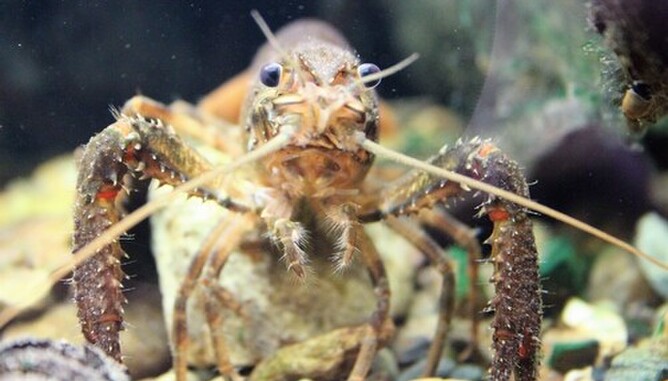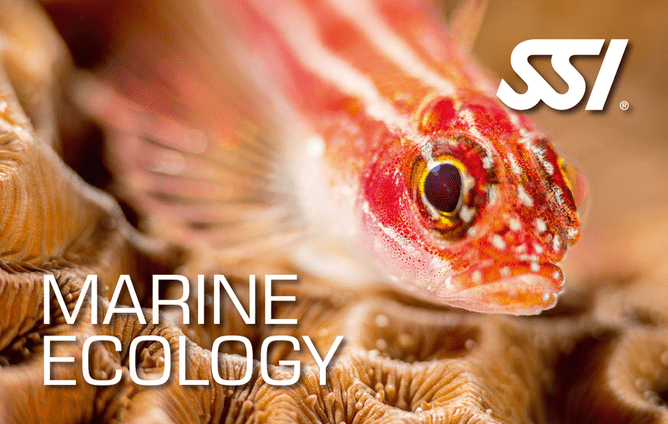Paranephrops - kōura - Freshwater crayfish
If you have been fortunate enough to dive some of Aotearoa's stunning freshwater lakes you may have spotted something hiding in the shadows, perhaps a beady pair of dark eyes peering out of the gloom, antennas twitching in the weed or a pair of chelipeds raised and poised for defence. It is of course Aotearoa's very own freshwater crayfish, the kōura.
Traditional Knowledge
Kōura are a valued mahinga kai species and considered a delicacy by Māori. In the past they were a staple food item, and prized in some areas for their use as a bargaining tool. Kōura were cooked in baskets in steam holes, hot springs or ovens. They were also preserved. After cooking the tails were threaded on a string of flax-fibre and dried in the sun; and in this condition they would keep for up to a year. Kōura were also dried and stored in baskets lined and covered with fern leaves.
The Te Arawa and Taupō-nui-Tia lakes were considered the most productive kōura fisheries in Aotearoa. In the past, the kōura fishery was actively managed by a combination of rāhui (where all fishing was halted in a particular area for a specified period of time, or where limits were placed on the use of particular methods and ownership rights (based on ancestral fishing grounds). Occasional releases of kōura were made into waterways to boost populations and selective harvesting ensured the long term viability of the populations.
Did you know?
In Te reo Māori kōura translates as "Gold".
Species
Paranephrops is a genus of freshwater crayfish, more commonly known as kōura and can only be found here in Aotearoa. There are actually two species of kōura, Paranephrops planifrons and Paranephrops zealandicus. They belong to the family Parastacidae. Paranephrops planifrons is found in the North Island and the northwest of the South Island, separated from Paranephrops zealandicus by the Southern Alps.
Description
Kōura has a hard shell-like skin therefor is a crustacean, one of a large group of animals, the arthropods, so-called because their legs and bodies are heavily protected by a jointed hard but flexible body covering (armour). The northern Kōura reaches lengths of up to 70mm whereas the southern koura is generally slightly larger at around 80mm and has hairier pincers (chelipeds). This outer shell covering eventually gets too small for the growing animal and will eventually split leaving their exoskeletons behind, while a new skin underneath hardens. This natural process is called moulting.
Habitat
They can be found living in streams, lakes and ponds, and even in swamps often sheltering between stones on gravelly bottoms. Kōura are largely nocturnal creatures, moving into shallower water at night and deeper water during the day, but they are also able to burrow into soft sediments sometimes creating fan shaped depressions.
Diet
kōura are omnivorous scavengers, opportunistic hunters, feeding on aquatic insects and vegetation and can also consume aquatic snails and can even be cannibalistic when sick or soft during moulting. It selects food in the pincers and pushes it into its mouth to be ground up. The food then passes through the small stomach for digestion.
Reproduction
They are a non-migratory species carrying their eggs, and then the developing babies under their tails. The female kōura produce her eggs between April and December, and most in May and June. The female will carry 20 - 200 eggs under the side flaps of her abdomen, where they take 3–4 months to hatch. When the juveniles are about 4mm long they are finally released, perfectly formed miniatures of the adult and well able to fend for themselves immediately.
Survival
Like all living animals and plants Kōura need oxygen to survive which they get from the water through their gills, under the thorax where the legs join the body. Water is sucked in, pumped forwards over the gills and then out through the mouth. If their gills get clogged with mud they are able to back-pump to flush out the debris. Pretty sophisticated breathing apparatus huh?
So how do you tell the difference between male and female? Females have holes at the base of the second pair of walking legs while males have soft fleshy pads (gonads) that protrude from the base of the fourth pair of walking legs. The four pairs of well-developed walking legs are used for most movement. When alarmed, kōura can flick their tails forward violently to propel themselves backwards at speed. When diving, if approached too quickly and too close they will raise their large pincers like a boxer and size for size are not intimidated whatsoever by a mere scuba diver, both fascinating and entertaining to watch.
Threats
Unfortunately numbers of all native species have been reduced because of many factors, including loss of habitat, water quality, depleting oxygen levels, disease (white tail) and competition from introduced (invasive) fish species. Their main predators, (many of them introduced species) are perch, catfish, trout and eels, but terrestrial predators like rats, stoats, kingfisher and shags can also impact their numbers. They are listed as a threatened species and their populations are in gradual decline.
Help protect the King of freshwater crustaceans
Kōura are very special to Aotearoa Dive, we love to show them to new divers and they always bring a smile to everyones face, no easy task with a regulator in your mouth. They also have a special part to play in our freshwater lakes and streams. They are native animals and recycle some of the leftover materials by their scavenging, therefore helping to clean up our streams and lakes in their own small way.
As they are so slow growing and many do not reach adulthood, there are never too many. It pays to take care of them and put the ones we accidentally catch back where we found them, especially the females. The final word is if you are on the hunt for some Kai, it would be time better spent hunting out the invasive species that threaten these incredible animals.
They definitely are something we should all be very proud of and do everything we can to ensure they remain the King of freshwater crustaceans.
Protect what you love!


